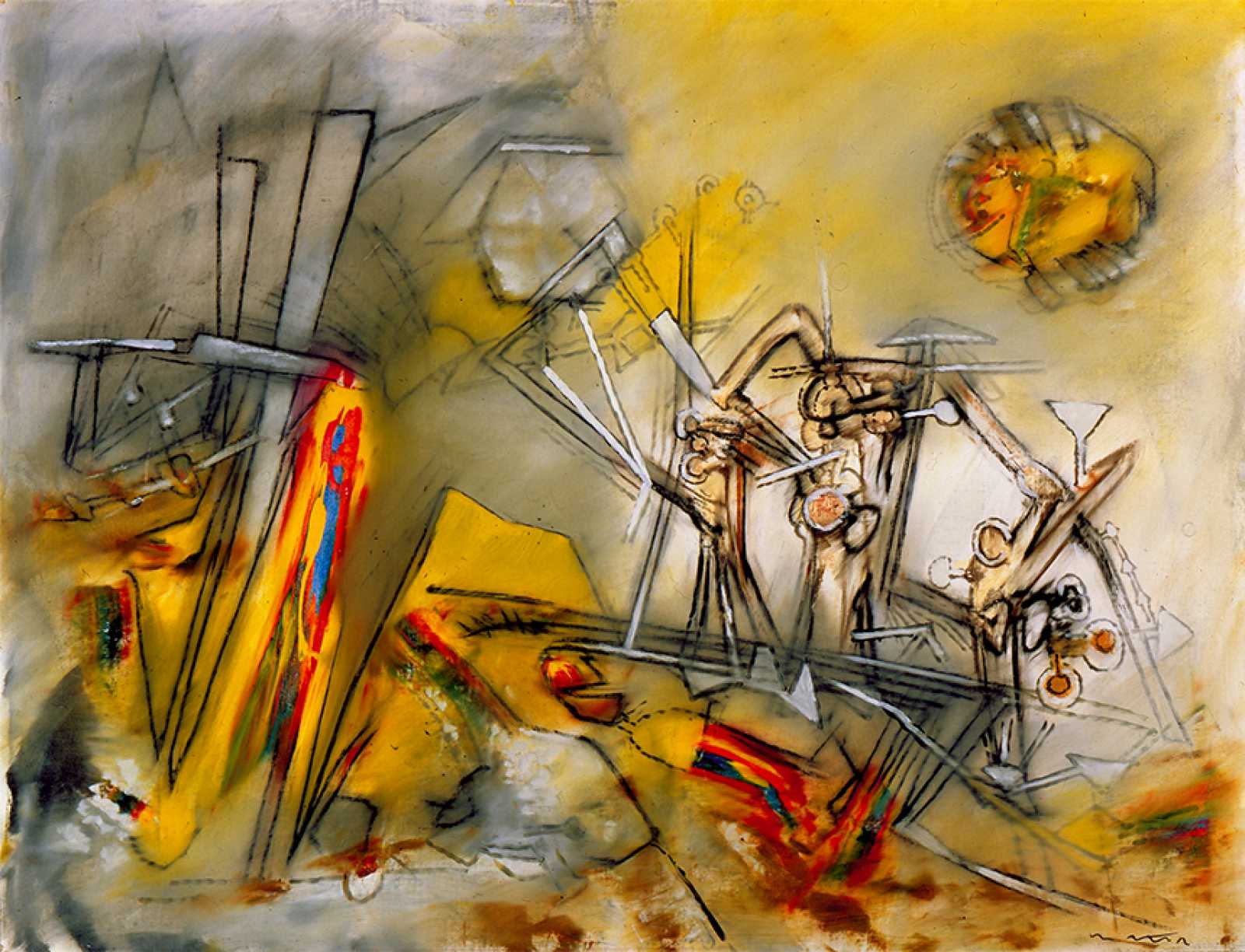Artworks of the Week
Roberto Matta
Born in Santiago, Chile, Roberto Matta moved to Europe in 1933, where he initially studied architecture with the pioneering Modernist known as Le Corbusier. Later, Matta took up painting and, through his friendship with Andre Breton, he joined the Parisian Surrealist group, which advocated channeling the unconscious to reveal forms and images. To escape war in Europe, Matta emigrated from Paris to New York in 1939; along with other European artists in exile, he became acquainted with New York-based painters including contemporaries Jackson Pollock, Robert Motherwell, and others. Matta’s spontaneous drawing and interest in mysticism influenced the evolution of Abstract Expressionism.
In Le Même Si, Matta’s angular draftsmanship and use of dreamlike forms create an atmosphere of both growth and destruction within an imaginary landscape. The acid colors of his palette in this painting convey a highly charged emotional state, supporting what Matta asserted as the purpose of his paintings: to depict the human condition. In an essay on Matta, Mexican poet Octavio Paz described his painting as “an architecture of time: an edifice of lines, forms, and colors in motion—space beginning to walk.”
Roberto Matta (Chilean, 1911-2002) Le Même Si, 1959, oil on canvas, 45 x 57 5/8 inches. Gift of the Estate of Seymour Oppenheimer, 76-1980.
Cara Romero
Cara Romero maintains a strong connection to her Native Chemehuevi land and culture of the vast California Mojave Desert. Water Memory is from a series of works that focus on the loss of water on Indian reservations throughout the West, calling attention to the destructive effects of climate change and the impact of government projects on Native lands, such as the building of dams and other water restrictions. In this work, Romero photographed her models underwater as they fell into a pool dressed in traditional Pueblo Corn Dance attire—a ceremonial dance expressing supplication or thanksgiving for the maize crop. The subjects, Rose B. Simpson (Santa Clara Pueblo) and Santiago Romero (Taos/Cochiti Pueblo), come from communities recently ravaged by flooding in the aftermath of wildfires in New Mexico.
According to the artist, “Water Memories are photography dreamscapes dealing with Native American relationships to water, the forces of man, and of Mother Nature. They are individual explorations of space, memory, and diverse Indigenous narratives that are both terrifying and peaceful.”
Cara Romero (Chemehuevi, born 1977), Water Memory, 2015, archival pigment print, 44 x 44 inches. Gift of Loren G. Lipson, M.D., 2018.12


